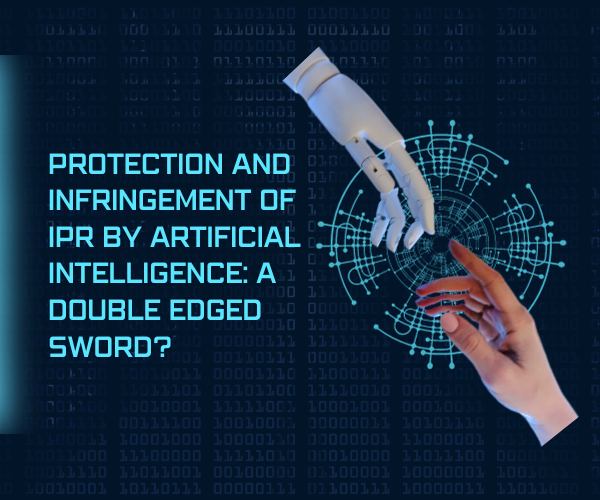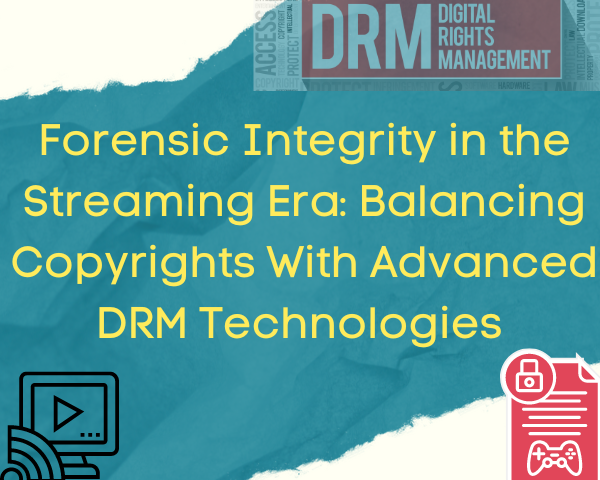Introduction
The term “AI” (Artificial Intelligence) was initially introduced in 1956 during a conference by John McCarthy. Broadly, AI refers to the capability of performing tasks or processing information using its own intelligence, algorithms, or commands, independent of human intervention. When considering the comparison between AI and humans, it is undeniable that AI possesses the potential to surpass human cognitive abilities.
In the contemporary era, AI plays a significant role in Intellectual Property Rights, becoming increasingly integral during a period where numerous tasks are executed by artificial intelligence. Consequently, it is imperative to recognize that the use of AI itself has become a component of Intellectual Property. Monitoring and safeguarding these advancements in AI technology are crucial aspects to ensure the protection of intellectual property in this evolving landscape.
Protection of IPR by AI
Intellectual Property Law with relation to Artificial Intelligence, plays a crucial role in safeguarding intellectual property by employing algorithms and content matching to detect infringing works. In the contemporary era, AI leverages vast amounts of data to identify instances of infringement, pinpointing works that may pose a threat to the integrity of the original content.
Following are the examples
- YouTube Inbuilt AI System: This system automatically notifies individuals about their works and identifies instances where infringement has occurred, enhancing awareness and control over intellectual property.
- Patent Search: Examiners utilize AI systems to detect existing inventions, classify inventions, and determine the novelty of new inventions. This aids in the efficient evaluation of patent applications.
- Detection of Copyright Infringement: AI systems contribute to the identification of copyright infringement by comparing the elements of a work, assisting in the proactive protection of intellectual property rights.
Utilizing these AI technologies empowers businesses and individuals to strengthen their capacity for safeguarding intellectual property, improving the efficiency of infringement detection, and promptly addressing potential threats.
Infringement of IPR by AI
Artificial Intelligence possesses extensive datasets that enable it to process diverse information. While some data is publicly available and exempt from infringement concerns, others may be copyrighted, rendering their use subject to legal constraints. Instances of AI-related infringement include platforms like Github Copilot, Open AI, Deviant Art etc., where class-action lawsuits allege unauthorized usage without obtaining permission from copyright holders. Certain AI systems generate new works, such as images and videos, based on user searches, potentially infringing upon the rights of original copyright holders.
In the modern era, a debate has emerged concerning the protection of AI-generated works, given the absence of direct human involvement in their creation. This question has been explored through various legal precedents and interpretations. The initial instance in this context was the monkey selfie case, where a photograph was captured by a monkey using a wildlife photographer’s camera. The dispute centered on whether the copyright should be attributed to the monkey or the photographer. The court ruled in favor of the photographer, establishing that copyright does not extend to animals. While there hasn’t been a comparable case in India, the country draws upon copyright principles from the USA and UK, prompting a consideration of similar legal precedents.
The ruling of the US District Court asserts that a work created entirely without human intervention is not eligible for protection. This principle is exemplified in the case of Thalervs Commissioner. Here, the applicant was granted a patent for inventing an AI. Subsequently, a new creation, DABUS, was produced using the same AI invention. While the Australian court acknowledged the patentability of such AI-generated works, the courts in the UK and USA categorically rejected protection, emphasizing that inventions must originate from human creation. India, aligning its intellectual property laws with those of the US and UK, similarly does not provide protection for works generated entirely by AI.
In case of Anil Kapoor vs. Simply Life India and Ors involving Anil Kapoor’s Personality Rights against AI in India, the case centered on the unauthorized use of Anil Kapoor’s character image and voice through AI, resulting in commercial gains for certain users. The court, recognizing Anil Kapoor’s personality rights, issued an injunction against 16 entities that were utilizing his likeness, thereby prohibiting further unauthorized use.
Conclusion
The influence of AI extends to both safeguarding and potential misuse, underscoring its role in contemporary dynamics. In the current AI-centric landscape, it becomes important for lawmakers to progress in tandem with evolving technology and legislative requirements. Examining existing legal precedents, it is apparent that AI lacks entitlement to protection when devoid of human involvement. A critical factor in reaching this conclusion is the absence of legal capacity for AI entities to independently initiate or be subject to legal actions. The legislative framework currently remains silent on the legal standing of AI, underscoring the role of human involvement in producing works eligible for legal protection.
*Written by Narendra Rathia, Legal Intern @Intepat IP




